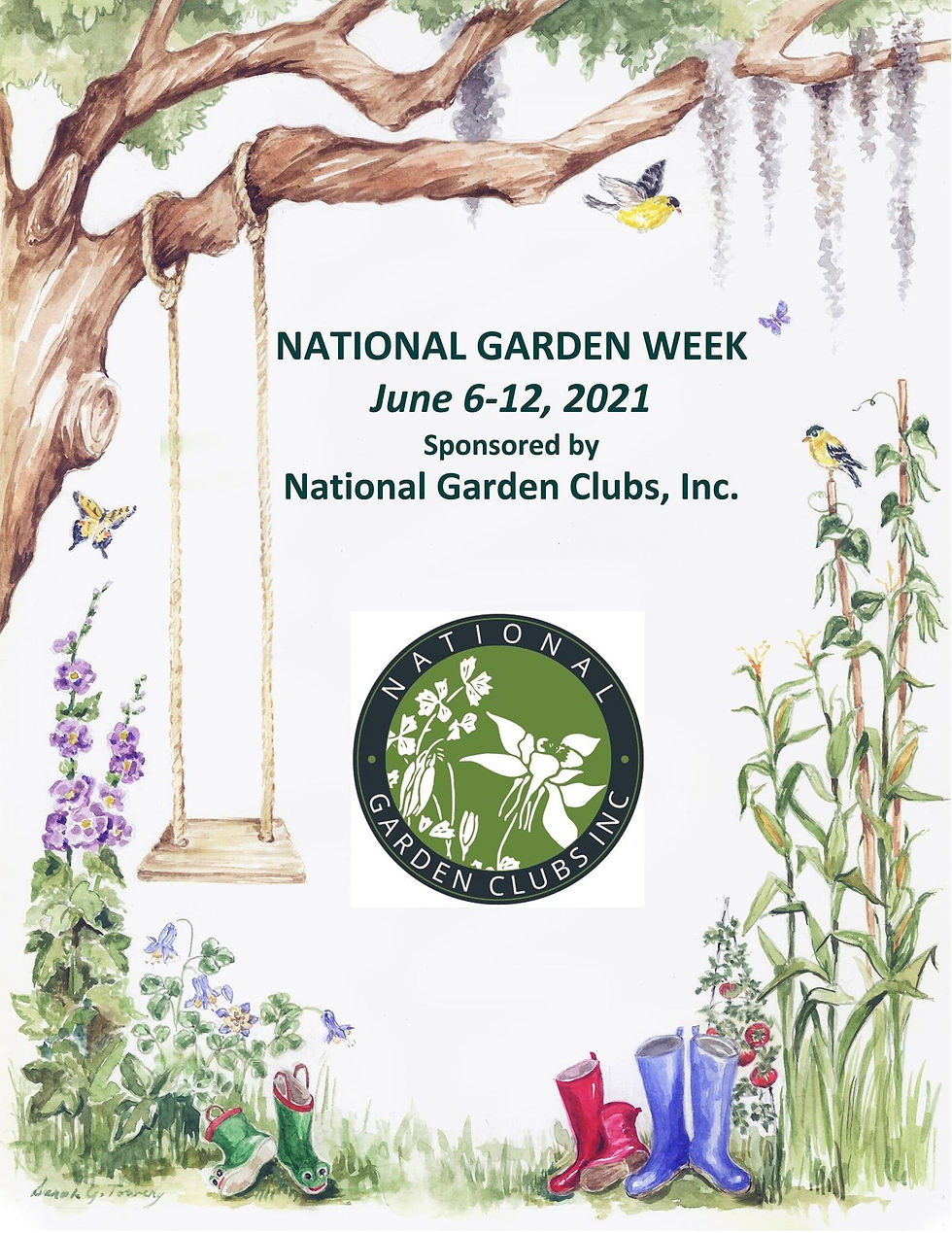Marietta Daisy Garden Club
- mariettadaisies
- Jun 6, 2023
- 3 min read
National Garden Week
June 4 to 10

National Garden Week takes place annually in the first full week of June.
It is spearheaded by National Garden Clubs, a nonprofit organization headquartered in St. Louis, Missouri that promotes the love of gardening, floral design, and civic and environmental responsibility. The day is about bringing more awareness to the importance of gardening and preserving gardening traditions and practices by passing on knowledge to new gardeners. Most importantly, the day is about simply enjoying gardening.
info copied from gardenclub.org
Ideas to Consider
Plan an educational program and/or workshop at your local library, public garden or garden center.
Sponsor a hands-on "How Do You Select Flowers/Shrubs for Your Garden" workshop at an area nursery.
Plan a garden tour. This is a great time to share your knowledge of growing while sharing ideas.
Beautify a manageable blighted area or enhance an existing garden. This would be a good opportunity to work with other groups.
Plan an activity with a youth group or school students.
Place a plant or flower arrangement at public facilities, along with one of the beautiful National Garden Week posters.
HISTORY OF NATIONAL GARDEN WEEK
The pioneers of National Garden Week, National Garden Clubs, was established in 1891 with branches in 19 states. National Garden Clubs organizes community gardening projects as well as provides educational programs. They also produce a quarterly publication called “The National Gardener.” In addition to all these, they offer college scholarships and grants for youth clubs planting pollinator gardens.
Gardening in America can be traced as far back as the year 1565, when Spaniards settled in St. Augustine, Florida, and brought plants from Spain and novelties from the West Indies. Years later, in 1607, English colonists settled in Virginia and named their colony Jamestown. They brought seeds from England but also cultivated crops grown by Native Americans, such as tobacco, corn, beans, and squash.
Between 1619 and 1865, during the slave trade, the gardens created by African American slaves in the U.S. were significant in the history of gardening. In this period, African Americans found time to cultivate their garden plots despite having to attend to the crops of slave owners. Their gardens provided additional food to the enslaved community and sometimes yielded enough produce to sell for profit.
One major feat in gardening history came when John Bartram of Philadelphia established his botanic garden in 1728. It is known to be the oldest surviving of its kind in North America. Bartram began trading seeds and plants with Peter Collinson, a London merchant, and botanist. He had a huge reputation in international trade and in Botany, which earned him the title of ‘Royal Botanist’ to King George III. He was believed to have introduced 150 North American plant species to Europe and was considered the greatest naturalist in the world.
NATIONAL GARDEN WEEK ACTIVITIES
Plan an educational program Celebrate the day by planning an educational program on gardening. It would bring a lot of people together for socializing and educating them at the same time.
Beautify the environment Place a flower arrangement at public facilities. It helps to beautify the environment as well as make the environment healthier.
Plan a garden tour Take time to plan a garden tour to celebrate the day. It would be a good time to share ideas on gardening alongside other people interested in gardening.
WHY WE LOVE NATIONAL GARDEN WEEK
Gardens beautify the home Gardens beautify the home with a mix of colors. Depending on what type of plants you decide to go for, you’ll have a colorful area in your home.
It brings people together National Garden Week brings people together. Seeing people who enjoy the same thing you do gives a sense of belonging and can only be beneficial to a community.
It promotes healthy living Having a garden in or close to your house would help you consume more naturally made food. This works wonders for the health.



Comments